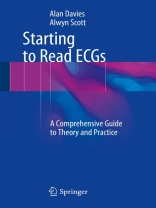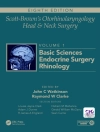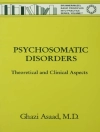The ECG is one of the most widely available diagnostic tests used in clinical practice today. This book is intended to build upon the topics covered in Starting to Read ECGs: The Basics thus allowing the reader to enhance their previous knowledge. Additional topics covered include a detailed look at calculating cardiac axis, an area often considered difficult to grasp, and alternative methods such as the various ways the heart rate can be calculated, the different criteria for determining LVH. Technical details about specific cardiac conditions, how to interpret pediatric ECGs, and the effect of medical devices on the ECG will also be discussed. Plentiful diagrams, tables and colour images used throughout to illustrate complex points in a simple and easy to understand way. The key facts section at the end of each chapter highlights the most important information and summary tables are provided to allow the book to be used as a quick reference guide. Each chapter will contain a mind map for revision and to aid dyslexic learners, practice questions and a few practice ECGs to consolidate the readers knowledge.The book tells the practitioner what they need to know clinically and doesn’t assume any prior knowledge. It is ideal for junior doctors and clinicians, nurses, paramedics, students and health care professionals involved in the recording of 12-lead ECGs.
İçerik tablosu
Chapter 1 Anatomy and physiology.- Advanced anatomy and physiology.- Cellular physiology (action potential of pacemaker/non-pacemaker cells).- Wiggers diagram.- Revision of waveform.- Chapter 2 Revision of recording ECG and basic interpretation skills.- Advanced lead placement (posterior ECGs / right sided ECGs).- Explanation of leads / electrical flow.- Review of normal values and paper timings.- Different methods of rate calculation.- Chapter 3 Calculating cardiac axis.- What it is.- Why it’s useful.- The quick look method.- The Hexaxial method.- Making it more accurate.- The vector method.- Worked examples.- Chapter 4 Brady-arrhythmias.- Background.- Genetic factors.- treatment options.- Chapter 5 Tachy-arrhythmias.- Background.- Genetic factors.- treatment options.- Chapter 6 conditions.- Conduction blocks.- PE, electrolye.- Brugada (type I – III).- Cardiomyopathy.- Hypertrophy.- Chapter 7 Implantable devices and the ECG.- PPM.- AICDs.- Various implanted monitors (i.e. Reveal).- Considerations.- ECG appearance.- Chapter 8 Drugs and the ECG.- Tricyclics.- Long QT causing drugs.- Arrythmogenic drugs.- Cardiac specific drugs.- Chapter 9 Paediatric ECGs.- Normal paediatric ECG.- Childhood cardiac abnormalities appearance on the ECG (i.e. congenital issues like holes in hearts, accessory pathways etc).- Chapter 10 ACS and re-profusion arrhythmia’s.- Bloods (enzymes).- physiology and pathology of arteriosclerosis.- Treatment options.- MI’s.- Posterior MIs.- Vasospasm.- Ideoventricular rhythms.- Treatment options (PPCI, CABG, thrombolytic therapy).












